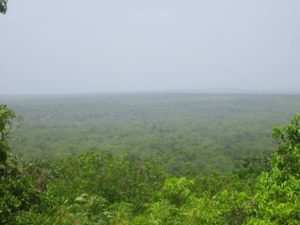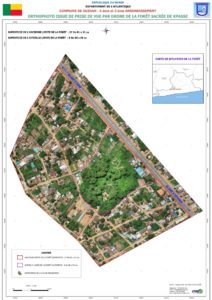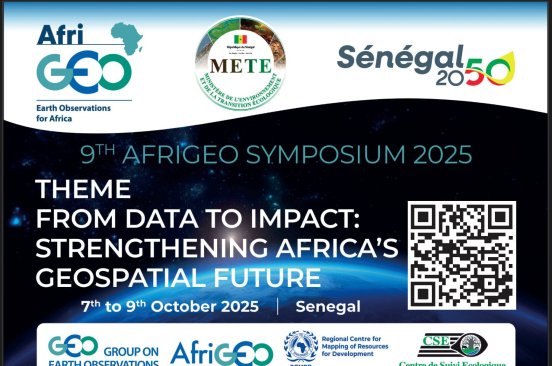
Preserving Benin's Sacred Forests: The Power of Aerial Mapping in Biodiversity Conservation
Hoping to restore the Kpassè Forest, Benin Flying Labs conducted a series of aerial mapping missions to assess the forest area remaining today.
October 25th, 2023
 KAKPO Sunday Berlioz, CC BY-SA 4.0, via Wikimedia Commons
KAKPO Sunday Berlioz, CC BY-SA 4.0, via Wikimedia Commons
Forests are not just collections of trees: they are one of the main reservoirs of biodiversity on the planet. Unfortunately, biodiversity is collapsing at an alarming rate, leading to the disappearance of entire ecosystems, the worsening of the causes and effects of climate change, the impoverishment of human communities who depend on it for their livelihood, and the emergence of conflicts linked to scarcity of biological wealth.
Benin’s Sacred Forests
Benin is a country rich in biodiversity, particularly thanks to its forests. But these forests are degrading at an unprecedented rate, and many of them have already disappeared. Some forests, however, have been an exception. To the inhabitants of the surrounding villages, these forests are crucial in the construction of their identity and in the structuring of their ritual life. The forests are considered sacred temples where the souls of protective ancestors live. As a result, they have long been protected and the living species they shelter preserved.
Today, even these sacred forests are under threat. This is the case of the Kpassè Forest, a forest island located in the historic city of Ouidah, a center of voodoo worship in southern Benin. The Kpassè Forest is home to several deities around whom major ritual ceremonies are periodically organized. Nevertheless, the sacred forest of Kpassè is on borrowed time. Originally occupying an area of 27 hectares, the sacred forest has been subject to increasing anthropogenic pressure due to urbanization. This has raised the question of its future.
 A Call to Action: Aerial Mapping for Conservation
A Call to Action: Aerial Mapping for Conservation
Faced with threat, we must act. Hoping to restore the sacred forest, the municipal authorities of Ouidah sought the expertise of Benin Flying Labs to conduct a series of aerial mapping missions to assess the area remaining today. In response, Benin Flying Labs dedicated the first two weeks of August 2023 to this mission, motivated by a shared commitment to protect the environment.
We carried out the first flights over the site using a Phantom IV RTK drone at a height of 90 meters. The overflights carried out took into account the ancient dimensions of the sacred forest. After the overflight phase, we looked at data processing. The ortho-photos that emerged painted a vivid picture of the forest's jeopardy. What were once mighty trees have now been replaced by a sprawl of buildings bordering the forest. To put it plainly, 4/5 of the initial surface area of the Kpassè Forest is occupied by people’s homes, leaving a mere five hectares of forest intact. These stark findings were shared with the municipal authority, who also acknowledged the disheartening degradation of this "protected" biodiversity.
Taking Steps Towards Restoration
The images produced by Benin Flying Labs were handed over to the Minister in charge of the Living Environment, who finally presented the situation of the Kpassè Forest to the Council of Ministers. Arising from this, arrangements have been announced to stop the occupation of this open-air museum and restore what remains. Such measures include the expropriation and, in some cases, eviction of those occupying the last fragments of the forest.
In the restoration phase, as per the agreement between the municipality and Benin Flying Labs, the latter will carry out quarterly overviews to monitor the project's evolution.
It's worth noting that the Ouidah town hall expressed satisfaction with the quality of work delivered by Benin Flying Labs. This collaboration between Ouidah and Benin Flying Labs is long-standing, dating back several years. In 2021, Benin Flying Labs employed drone technology to map land use elements in the old core of the Ouidah commune.
In the face of vanishing sacred forests and the urgent need to protect biodiversity, the power of technology and partnership in safeguarding our natural heritage is clear. It is our collective responsibility to cherish and protect these vital ecosystems, understanding that the preservation of biodiversity is intrinsically linked to our own well-being and the well-being of our planet.
Category(s)
Location(s)
Recent Articles
View All »

Wildfire Assessment and Web Application in Sao Paulo
